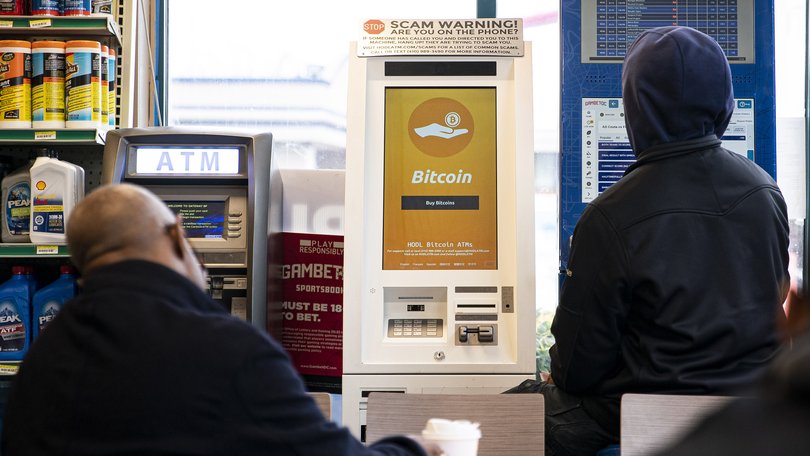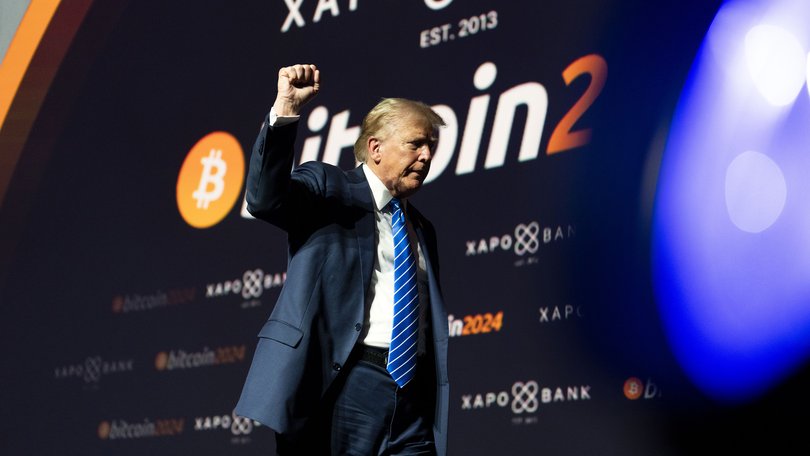THE ECONOMIST: Once skyrocketing Bitcoin & crypto market plummeting back to earth as crypto crash fears grow

On January 3 it will have been 17 years since Satoshi Nakamoto, the pseudonymous founder of bitcoin, first unveiled the cryptocurrency.
The most popular cryptocoin may not be old enough to be served in a bar across most of the world, but it has cemented itself in the global financial order faster than any other asset.
In recent years the crypto industry has gone from an object of mockery in mainstream finance and the target of outright hostility from regulators to being broadly accepted, even encouraged.
Sign up to The Nightly's newsletters.
Get the first look at the digital newspaper, curated daily stories and breaking headlines delivered to your inbox.
By continuing you agree to our Terms and Privacy Policy.Banks and asset managers are launching their own products, stablecoins have gained regulatory certainty from American lawmakers, and the latest cast of American regulators are crypto enthusiasts.
In October bitcoin’s market value peaked at a heady $US2.5 trillion ($3.8t).
Strange as it might seem, these victories now pose a problem for crypto. Prices have begun to tumble; bitcoin has dropped from an all-time high of around $US126,000 in early October to nearer $US93,000 today.
For a speculative asset — one which produces no income and relies solely on hopes for future capital gains — the absence of a fresh bullish narrative to justify further price rises is a challenge.
And because wider acceptance has deepened crypto’s links with other markets, the ripple effects from the dip will be felt far beyond the industry.

It is hard to say anything with confidence about the future direction of an asset like bitcoin. Many investors (and financial journalists) have tried, and failed. But there has been a clear pattern to bitcoin rallies in recent years. Every exhilarating upswing has been bound up with optimistic stories about greater acceptance.
In 2020 and 2021 lockdown policies and fiscal largesse from governments were paired with the increasing provision of crypto trading by mainstream brokers. From late 2023 hopes began to build that crypto exchange-traded funds (ETFs) would soon be launched.
And, indeed, the first ETF applications were approved by America’s Securities and Exchange Commission in January 2024. Donald Trump’s election victory in November that year gave bitcoin another big boost.
Today investors have no trouble getting their hands on bitcoin. In much of the world, brokers offer access to a range of crypto assets to anyone with a phone. Of course, some big investors have stayed away.
This month crypto enthusiasts cheered the news that the central bank of Czechia had purchased $US1 million in bitcoin and other cryptocurrencies. But the acquisition was a drop in the ocean relative to the bank’s $US171 billion in reserves.
And most central banks still rule out including digital assets in their defensive hoards. It is hard to see them changing their minds. The scope for higher trading volumes, then, seems limited.
The other price of victory is that the pain from a crypto crash will be felt more widely than in the past. The investors most exposed to the recent slump are those that behaved as if the boom would never end.
That includes Michael Saylor’s Strategy, a software company that is now mainly a strange leveraged bet on bitcoin; the firm has borrowed to accumulate about $US60 billion-worth.
For the first time in two years Strategy’s market capitalisation is below the value of its bitcoin holdings, raising the prospect of crypto firesales.

The bigger risk is that the miserable sentiment in cryptocurrency spreads to other markets. Since 2020 bitcoin has become less volatile than it used to be. But it is also now much more closely correlated with technology stocks.
As bitcoin has broadened in ownership beyond hardcore believers, spillovers between asset classes have become more common. Contagion could work in either direction: gloom about pricey tech stocks could weaken bitcoin, or flighty crypto investors could flee the equity market.
The Nasdaq, an index of tech-heavy stocks, has fallen by nearly 6 per cent in recent days, still gentle as a sell-off goes. But it is worth watching closely.
Bitcoin may have exhausted most of the obvious catalysts for further surges, from the greater ease of investment to more regulatory certainty. But one piece of news could just help it soar again.
Enthusiasts got less than they had hoped for from the Strategic Bitcoin Reserve, which was set up by Mr Trump in March. Since then, it has remained a vehicle for bitcoin acquired mainly as a result of law-enforcement seizures.
Some legislators, including Cynthia Lummis, an influential pro-crypto Republican senator, have supported the purchase of more bitcoin on the open market. If the price continues to decline, advocates might call it a buying opportunity.
Crypto enthusiasts close to the administration — many of whom will be nursing losses — might well agree. The prospect of the government stepping in seems remote. But when it comes to both crypto and politics, surprises can never be ruled out.
Originally published as Why crypto’s spectacular market success is going sour
